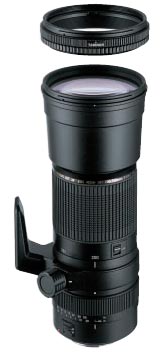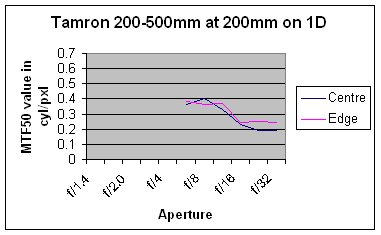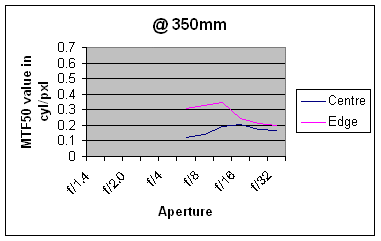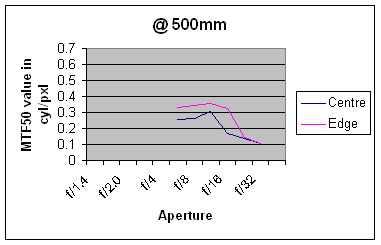Tamron SP AF 200-500mm f/5-6.3 Di LD (IF)
This super telephoto zoom, which is capable of bringing the subject matter of your photographs very close indeed, is one of only a few affordable lenses with the reach of a 500mm focal length. Fitted with Tamron’s new concept FEC (filter effect control) ring, we take a look at how the lens performs.
 Specifications
Specifications
- Focal length 200-500mm
- Aperture f/5-6.3
- Angle of view 12-5°
- Filter size / type 86mm
- Construction Elements/groups 13 elements in 10 groups
- Focusing type Internal
- Closest focus 2.5m (over entire range)
- Weight 1.237kg
- Dimensions (Dia x length) 93.5x227mm
- Mounts available Canon, Nikon, Minolta,
- Tripod bush Yes, removable
- Price £829.99
Build and handling
This lens comes boxed and supplied in a soft zipped pouch and includes the lens hood and FEC ring which is detachable. Also supplied is a quick-release tripod mount. The lens is rear focusing and first up along the barrel is the manual focus ring marked with a basic distance scale. It is nicely torqued in MF mode but becomes stiff and is non over-ride able in autofocus mode. Next is the tripod mount bush which has a quarter-turn and pull quick release method that is very effective. The mount plate itself is let down by being small with only a single bush thread, meaning it cannot be balanced for different weight cameras.
The zoom ring is a nice wide (72mm) affair that is marked at 50mm intervals between the 200mm and 500mm extremes. At the 200mm end there is a zoom lock to stop creep when carrying. The remainder of the ring is covered in Tamron’s comfortable ribbed grip finish.
At this point the lens extends when zooming and becomes some 95mm longer when pushed out to the 500mm mark. A cone shaped area adds another 70mm to the lens. The FEC ring screws into the filter thread, effectively adding 20mm more and the hood fits on either the lens or the FEC ring.
The FEC ring allows a full turn in either direction (two turns in total) to any filter fitted to it with the hood still in place. It does help if you use a polarising filter but in truth does seem a bit gimmicky on a lens of this type!
The general feel and handling of the lens, in spite of the light weight for the focal length, or perhaps because of it, feels good and is comfortable in use. The rear focus ring helps when manually focusing as it stays in the same place but is bad news if using the lens on a beanbag in AF mode as it rotates during autofocus and is just where the rig would be resting!
Optical Quality
The phenomenon of edges being sharper than the centre in lenses that are designed to work on full frame sensors and tested on cropped sensors has come up before and we have always put it down as a plus point. This is another lens that displays these characteristics. Zoom lenses also tend to be better at the shorter end than at the extremes of their focal length and again, this lens is no exception. However, having a short multiplication factor of only two and a half times the focal length does help to keep this lens fairly consistent and the 500mm end is not that far short of the 200mm. As with the majority of lenses, it needs stopping down by one or two stops to achieve the optimum results. With the improving control of noise levels in modern DSLR’s, this is becoming less and less of a problem.
The control of distortions does not normally have great significance on long focal length lenses and we found this to be the case here. Chromatic aberrations on the other hand are approaching the level where they may be a nuisance as pixel counts rise. They did not, however, transfer to A4 prints in the test.
|
|
|
Click on each comparison photo below to view full size versions
Below is our lens test data. To find out how to use these graphs look at this article: How we test lenses



Verdict
We found this lens light and compact enough to carry around in a standard camera bag, so for a focal length of 500mm, this has to be an advantage, making it available when needed but not necessary to have a separate carrying bag. The optical performance was up to most uses except perhaps top end wildlife or fast action sports. A handy addition to your kit with a usable focal range.
In summary, the positive points of the Tamron SP AF 200-500mm f/5-6.3 Di are are:
![]() Lightweight and compact for focal length
Lightweight and compact for focal length
![]() Comfortable and easy to use.
Comfortable and easy to use.
![]() Good optical performance for the price.
Good optical performance for the price.
Negative points are:
![]() Autofocus a little noisy and focus ring turns during AF
Autofocus a little noisy and focus ring turns during AF
![]() Chromatic aberrations OK but on the borderline
Chromatic aberrations OK but on the borderline
Check out the price of the Tamron SP AF 200-500mm Di here
Test by Ian Andrews www.wildaboutkent.co.uk
I'd tested this on a tripod, locked down, with timer shutter and the results were quite dissapointing.
Tests were on a Canon EOS 30d, where a Canon 70-200 2.8 L was used to test the camera out, and the results of that were fabulous. I am NOT expecting the same quality of shot with the Tamron, but the images were impossible to really process in Photoshop to a useable degree.
The shots in this review are pin sharp, and is one of the main reasons I bought this lens. I understand slight variances with 'cost saving' items, but the lens isnt really usable.
Anyone have any light to shed on the subject?
I did some tests at varying aperture and focus at infinity. At f5.6, where the Tamron is wide open, the Canon was noticeably sharper than the Tamron. At f8 (the sweet spot for the Tamron) it was actually quite difficult to see any difference in sharpness. The Canon had better colours and contrast than the Tamron in all cases, as you might expect from a lens that costs two and a half times more. However, it's not more than you can fix up with a bit of judicious PP.
I then did some more tests, using the same procedure, but focussing on a different subject just about 10 yards away. The results here were quite different. At all apertures, the Tamron was significantly less sharp than the Canon. I wonder if the Tamron has been optimised for IQ at infinity focus, maybe. If this is the case (or indeed possible) it's maybe not surprising since with this focal range I guess most people would be using it for subjects a long way away.
My camera is a 350D.
Here is a quick, unscientific, but decisive comparison between the Sigma "Bigma" 50-500mm and the Tamron 200-500. I've searched and searched, but could not find a comparison of these two lenses. I also describe how to address the chromatic aberration issue as the only next step up that I have found is unaffordable to many people including myself.
I owned the "Bigma" for a couple years. It's very soft at 500 mm and at a price of $1000 and a weight of over 4 lb. it is actually softer than a $250 Kenko 400-800mm lens I bought from eBay. Yes, the Kenko is slower and it creates some blue fringing. It's an el-cheapo. This can be very easily eliminated with channel operations on the blue layer in Photoshop. There is no way you can compensate well for the "Bigma" softness by sharpening or unsharpening.
I met another photographer who saw me with the Sigma. Introducing himself, he told me he sold the lens because he had the same experience I did.
The Tamron 200-500 is much sharper than the Sigma/Bigma 50-500 at 500mm and it is 1 1/2 lb lighter! The wider end of the Sigma is a waste since I have other lenses that cover that range and much better. The Tamron even gives very good results using my Tamron 2X teleconverter at 1000 mm! The only problem is a bit of chromatic aberration in the details. Magenta/green fringing can easily be remedied in Photoshop my converting the image to Lab color mode and blurring the 'a' channel. You can blur it or you can try reducing contrast on that channel. (An additional benefit to blurring the color channel is color noise reduction.) Another trick is to use the clone or heal brush on the 'a' channel, cloning from neutral spots to the fringe areas, while displaying the full color composite image. This all goes for any blue fringing you might get.
(If you haven't spent the time to read Dan Margulis book "Photoshop LAB Color" to understand the Lab color mode, it is definitely worth spending the time. It is an, otherwise, little discussed powerful tool in Photoshop.) I am not Margulis and do not own any part of the publishing company.
Now, as you might expect, reduction of contrast or blurring the color channels in LAB will also reduce the intensity of other objects that are red, green or blue. Convert it back to RGB and increase the overall saturation slightly and those colors will be brought back to life without the fringing!
One important suggestion: when you do the Lab corrections, do it on a flattened duplicate then, after converting back to RGB, drag-Shift the image back as a new layer on the original and name it Lab Defringing or something. This preserves your previous layers. You can also add a layer mask to the "LABBED" layer and if there are only small spots of red and green that need to be recovered, paint the mask using black over the areas of red or green that need to be recovered. This simply uncovers the original layers below in these areas.
This assumes you already know Photoshop fairly well and as much trouble as it seems, it really becomes very routine.
The Tamron 200-500 is the best lens I have found for the price. I considered saving up for the Canon 500 mm $5000+ 'L' lens for the next several years, but times is too precious. Having the tools to correct the Tamron, to me, makes it equivalent to a $2000 lens if there was one. The only options I have found with almost perfect sharpness are the Canon and a slightly less expensive ($4000) Sigma lens.
Besides, the Canon is 8 lb! This is fine if you are shooting from the side lines of a sporting event and you don't intend to move much, but I didn't even like toting the 4+ lb Sigma lens. There have been better reports on the Sigma lens. Could these people have gotten better copies? I don't know, but I found a professional report that confirms that the Sigma gets quickly softer beyond 200mm.
The bottom line is that chromatic fringing is quite fixable, while excessive softness loses detail that cannot be recovered fully with unsharpening. At least, not very well.
You can also use channel operations in RGB mode quite effectively on some photos as described in the book by Katrin Eismann "Restoring & Retouching" 3rd edition pp 140 "Removing color fringing."
Also, I was able to freeze a bird in flight at 1/1000 second with this lens. With the Canon EOS 40D greatly improved noise at higher ISO, I simply set the ISO on automatic. Newer cameras are making it possible to use more affordable glass with quality results.
PS: Yes, I tried the Chromatic Aberration correction control in Camera Raw and it simply did not work nearly as well for cases that are more then slight. This control has worked well on some photos, but it is not a panacea for this problem.
Jim Hawkins, Advanced Amateur and Semiprofessional photographer and restorer.
www.j-hawkins.com
You pays yer money and takes yer choice!
Ian
>You pays yer money and takes yer choice!
Yes, but from my experience with these two lenses, it's really the same animal, but one dog has 2 extra legs that are too short to hit the ground, but I, nevertheless, payed for that and got a six legged dog that couldn't run fast.
I lost money and changed my choice. As for me, the superzoom turned out to have no value unless I want to use it to build up my biceps. I made a bad choice and went into denial instead of testing it more thoroughly and returning it earlier. Yep, it's my own fault.
I once had a microwave oven with a dial and a lever. You turn the dial to set the time and move the lever to set the power---two moves. I now have a microwave with 14 useless extra buttons, a digital display that shows me the time and power (most of the LCDs no longer work) and I have to push 8 buttons to set the time and power. If I had a choice, I would buy the one with less "features" but does the job well.
The only extra useful feature I WISH I had with the Tamron is Image stabilization, but I don't have an extra $4000 to pay for that nor will I very soon.
Besides, the Tamron cost almost as much as the bigma. I'd rather put my money into a quality small range than a feature "superzoom" range that doesn't work well.
From what I have read, some people have had better results from the bigma. I'm happy for them. Maybe they got better "copies."
Add your message
Please login here or if you've not registered, you can register here. Registering is safe, quick and free.
photodo Stats
428 MTF tests
74 in-depth photodo reviews
100+ users join each day
Help the lens community by reviewing or rating a lens today via our lens search
Latest Lens Reviews
- Chinon 28mm f/2.8 Vintage Lens Review
- Canon EF 70-200mm f/4L IS II USM Lens Review
- Samyang AF 85mm f/1.4 EF Review
- Sigma 70mm f/2.8 DG Macro Art Review
- Samyang AF 24mm f/2.8 FE Review
- Meike 50mm f/1.7 Review
- Tamron 70-210mm f/4 Di VC USD Review
- Lensbaby Burnside 35mm f/2.8 Review
- Asahi Super Takumar 50mm f/1.4 Review
- Asahi Super-Multi-Coated Takumar 135mm f/3.5 Review







